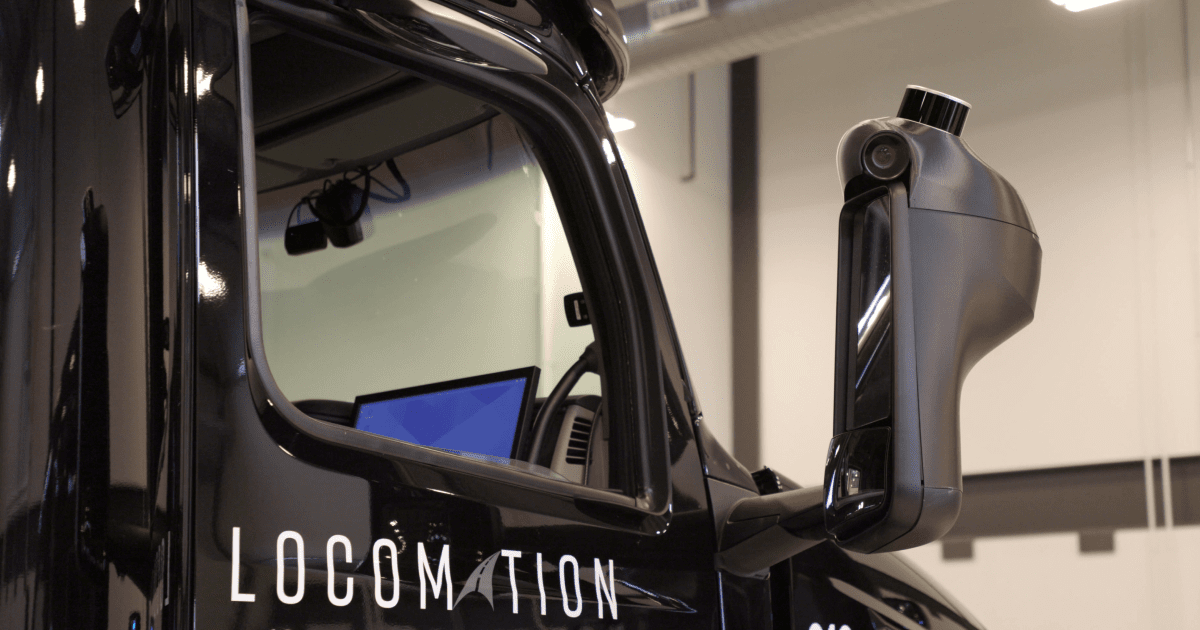3D Printing with PEEK, PEKK, & ULTEM™
Join AON3D's 3D printing application and materials experts for a 30-minute session that covers all the key information
Locomation needed to manufacture short-run, large sensor housing prototypes, fast and affordably, to get their autonomous trucking solution to market.
3D printing full-scale ASA parts on the AON M2+ provided durable, heat resistant, and UV resistant road-worthy functional prototypes.
$50,000 – $100,000 and weeks to months per iteration.
The Customer:
Founded in 2018 by a team of the world’s foremost experts on autonomous vehicles, robotics, and artificial intelligence, Pittsburgh-based Locomation’s goal is to automate our moving world. Their first stop — bring autonomy to the freight industry to help improve efficiency and reduce labor shortages in an increasingly interconnected global economy.
The Autonomous Relay ConvoySM (ARC) technology, Locomation’s first scalable step in long-haul trucking automation, consists of two autonomy-capable trucks with one driver in each truck. Each driver takes turns actively leading the convoy while the driver in the follower truck rests in the sleeper berth and the truck in autonomous follower mode.
Designed as an aftermarket upfit kit, the ARC system will be ready to start delivering the benefits of autonomous trucking soon, not in 8-10 years. For freight companies, this means they will be able to operate two trucks 20-22 hours a day, delivering 2x the cargo, 2x faster, and 2x farther, all while reducing fuel consumption and emissions.
The Challenge:
Founded in 2018, time to market was of the essence for Locomation. Entering an already heated and well-funded race for autonomous trucking meant Locomation’s team of engineers and software developers would have to rapidly, and affordably, iterate and test their designs in real-world situations.
Only needing 4-6 sensor housings manufactured at a time, and measuring over 2ft in the Z-direction, injection molding would have run $50,000-$100,000 and months per iteration. In addition, their sensor housings needed to be high-strength, impact resistant, UV resistant, and able to withstand the heat of summer on the road.
The Solution:

Locomation’s engineers landed additive manufacturing sensor housing prototypes in Acrylonitrile Styrene Acrylate (ASA), a strong and durable material known for its high impact strength and UV resistance. ASA requires an actively heated build chamber to achieve high-strength parts while preventing warping.
Knowing their project and material constraints, the Locomation team found that the AON M2+ High Temperature 3D Printer, which met their size and material processing requirements. Locomation’s engineers eventually opted to split their models to minimize supports and post processing. With minimal sanding and automotive filler primer, parts were ready for paint in days, not months.
In addition to functional prototypes, the AON M2+ has helped Locomation speed to market in a variety of ways including drill guides, manufacturing jigs, and fixtures.
What’s Next:
Pittsburgh-based Locomation is poised to become the first company to deploy an autonomous trucking technology safely, legally, and routinely in commercial operations at scale across the United States.
The ARC system is Locomation’s first phase product which will allow them to start booking orders and driving revenue-producing miles years ahead of the competition.
Achieve New Levels of Part Performance & Throughput
3D print the world's highest performance polymers - bigger, faster, and stronger than ever.

